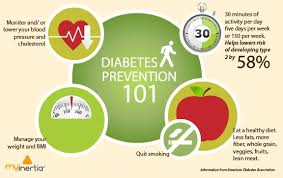How to detect diabetes without analysis Diabetes is a metabolic disorder that occurs when blood sugar (glucose) rises too high, and this disorder occurs when the body does not produce enough insulin or no insulin at all, which prevents glucose from reaching cells to use as energy. He appears.
How to detect diabetes without analysis
In the following lines, you will learn about the types of diabetes, how to detect diabetes without analysis, and its common symptoms:
Types of diabetesType 1 diabetes
This is an autoimmune disease where the body does not produce insulin because the body’s immune system attacks the insulin-producing cells in the pancreas, the beta cells.
Type 2 diabetes
This is the most common. This is a condition in which cells cannot use blood sugar (glucose) efficiently for energy. Type 2 diabetes can develop gradually, and early symptoms can be mild, so many people may not realize they have diabetes.
Early signs and symptoms of diabetes
Diabetes has many early symptoms that can be detected without analysis, most notably:
Excessive thirst, frequent urination, and extreme hunger Weight loss or gain Blurred vision Wounds heal slowly Wounds heal slowly and skin infections and dark spots throughout the body Fruity, sweet, or acetone-like smell Tingling or numbness in the hands or feet
Symptoms of diabetes in women
Diabetes has some symptoms and complications that are unique to women and do not affect men, the most prominent of which are the following:
Vaginal and oral yeast infections: This condition may cause vaginal itching and pain, increased vaginal discharge, leukoplakia in the mouth, difficulty eating or swallowing, swelling and redness of the gums or inner cheeks.
Polycystic ovary syndrome (PCOS): It can cause signs and symptoms such as irregular periods, acne, hair thinning, and increased facial and body hair growth. About half of women with PCOS develop diabetes.
Urinary tract infections (UTIs): Urinary tract infections occur when bacteria enter the urethra, including the urethra, ureters, kidneys, and bladder, and are more common in women than men, and are more common in people with diabetes because sugar in the urine, is the main cause in the occurrence of urinary tract infections. A breeding ground for bacteria.
It may be necessary to pay attention to the early signs of diabetes so that you can be diagnosed more quickly and treated appropriately and your blood sugar levels controlled, which can significantly improve your health and reduce risks and complications.


